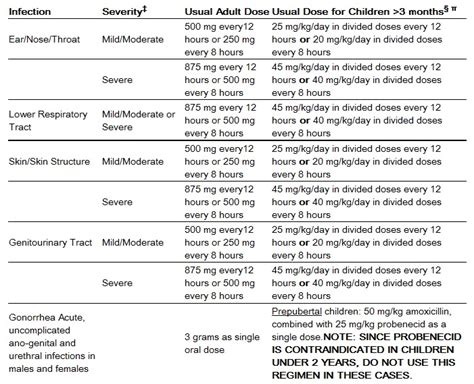Intro
Amoxicillin is a type of antibiotic that belongs to the penicillin group of drugs. It is widely used to treat a variety of bacterial infections, including those affecting the respiratory tract, skin, and urinary tract. The importance of understanding what amoxicillin does and how it works cannot be overstated, as it is a commonly prescribed medication that can have a significant impact on our health. In this article, we will delve into the world of amoxicillin, exploring its benefits, working mechanisms, and potential side effects.
The discovery of antibiotics like amoxicillin has revolutionized the field of medicine, enabling us to effectively treat bacterial infections that were once deadly. Amoxicillin is a broad-spectrum antibiotic, meaning it can target a wide range of bacteria, including both Gram-positive and Gram-negative bacteria. This versatility makes it a valuable tool in the fight against bacterial infections. As we continue to navigate the complexities of the microbial world, it is essential to understand the role that amoxicillin plays in maintaining our health.
The mechanism of action of amoxicillin is fascinating, involving the inhibition of bacterial cell wall synthesis. By binding to specific proteins in the bacterial cell wall, amoxicillin prevents the formation of a stable cell wall, ultimately leading to the death of the bacterial cell. This targeted approach allows amoxicillin to selectively kill bacteria while leaving human cells intact. As we explore the intricacies of amoxicillin's mechanism of action, we will gain a deeper appreciation for the intricate dance between antibiotics and bacteria.
How Amoxicillin Works

Benefits of Amoxicillin
The benefits of amoxicillin are numerous, and its effectiveness has been demonstrated in a wide range of bacterial infections. Some of the key benefits of amoxicillin include: * Broad-spectrum activity: Amoxicillin can target a wide range of bacteria, making it a valuable tool in the treatment of various infections. * High efficacy: Amoxicillin has been shown to be highly effective in treating bacterial infections, with cure rates often exceeding 90%. * Low toxicity: Amoxicillin is generally well-tolerated, with few side effects reported in clinical trials. * Cost-effective: Amoxicillin is a relatively inexpensive antibiotic, making it an attractive option for patients and healthcare providers.Common Uses of Amoxicillin

Side Effects of Amoxicillin
While amoxicillin is generally well-tolerated, it can cause some side effects, including: * Gastrointestinal upset: Nausea, vomiting, and diarrhea are common side effects of amoxicillin. * Allergic reactions: Some patients may experience allergic reactions, such as rash, itching, and difficulty breathing. * Yeast infections: Amoxicillin can disrupt the balance of normal flora in the body, leading to yeast infections. * Interactions with other medications: Amoxicillin can interact with other medications, such as blood thinners and certain antibiotics.Amoxicillin Dosage and Administration

Precautions and Contraindications
While amoxicillin is generally safe, there are some precautions and contraindications to be aware of, including: * Allergic reactions: Patients with a history of allergic reactions to penicillin or other antibiotics should exercise caution when taking amoxicillin. * Pregnancy and breastfeeding: Amoxicillin is generally considered safe during pregnancy and breastfeeding, but it is essential to consult with a healthcare provider before taking the medication. * Kidney and liver disease: Patients with kidney or liver disease may require adjusted dosages or alternative treatments.Amoxicillin Resistance

Alternatives to Amoxicillin
In cases where amoxicillin is not effective or suitable, alternative antibiotics may be prescribed, including: * Azithromycin: A macrolide antibiotic effective against a range of bacterial infections. * Cephalexin: A cephalosporin antibiotic used to treat infections such as pneumonia and skin infections. * Clindamycin: A lincosamide antibiotic effective against anaerobic bacteria and certain types of streptococci.Conclusion and Future Directions

We invite you to share your thoughts and experiences with amoxicillin in the comments below. Have you taken amoxicillin for a bacterial infection? What were your experiences with the medication? Share your story and help others understand the importance of responsible antibiotic use.
What is amoxicillin used for?
+Amoxicillin is used to treat a variety of bacterial infections, including respiratory tract infections, skin and soft tissue infections, urinary tract infections, and dental infections.
How does amoxicillin work?
+Amoxicillin works by inhibiting the synthesis of the bacterial cell wall, ultimately leading to the death of the bacterial cell.
What are the common side effects of amoxicillin?
+Common side effects of amoxicillin include gastrointestinal upset, allergic reactions, yeast infections, and interactions with other medications.
Can I take amoxicillin during pregnancy or breastfeeding?
+Amoxicillin is generally considered safe during pregnancy and breastfeeding, but it is essential to consult with a healthcare provider before taking the medication.
What are the alternatives to amoxicillin?
+Alternatives to amoxicillin include azithromycin, cephalexin, and clindamycin, among others.
